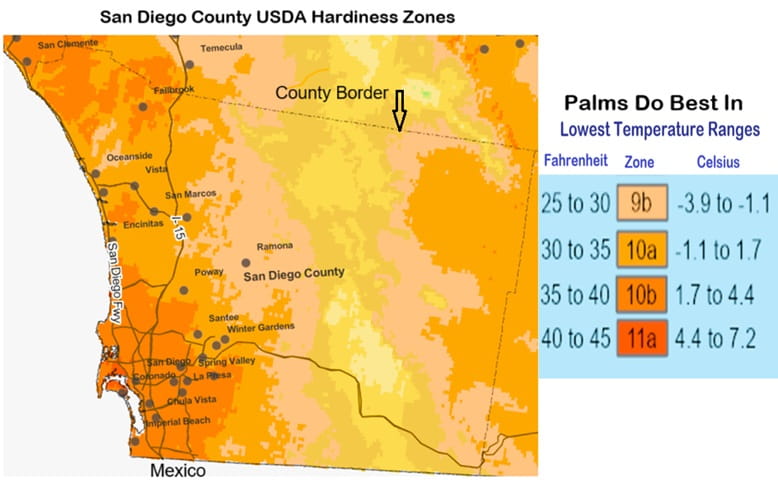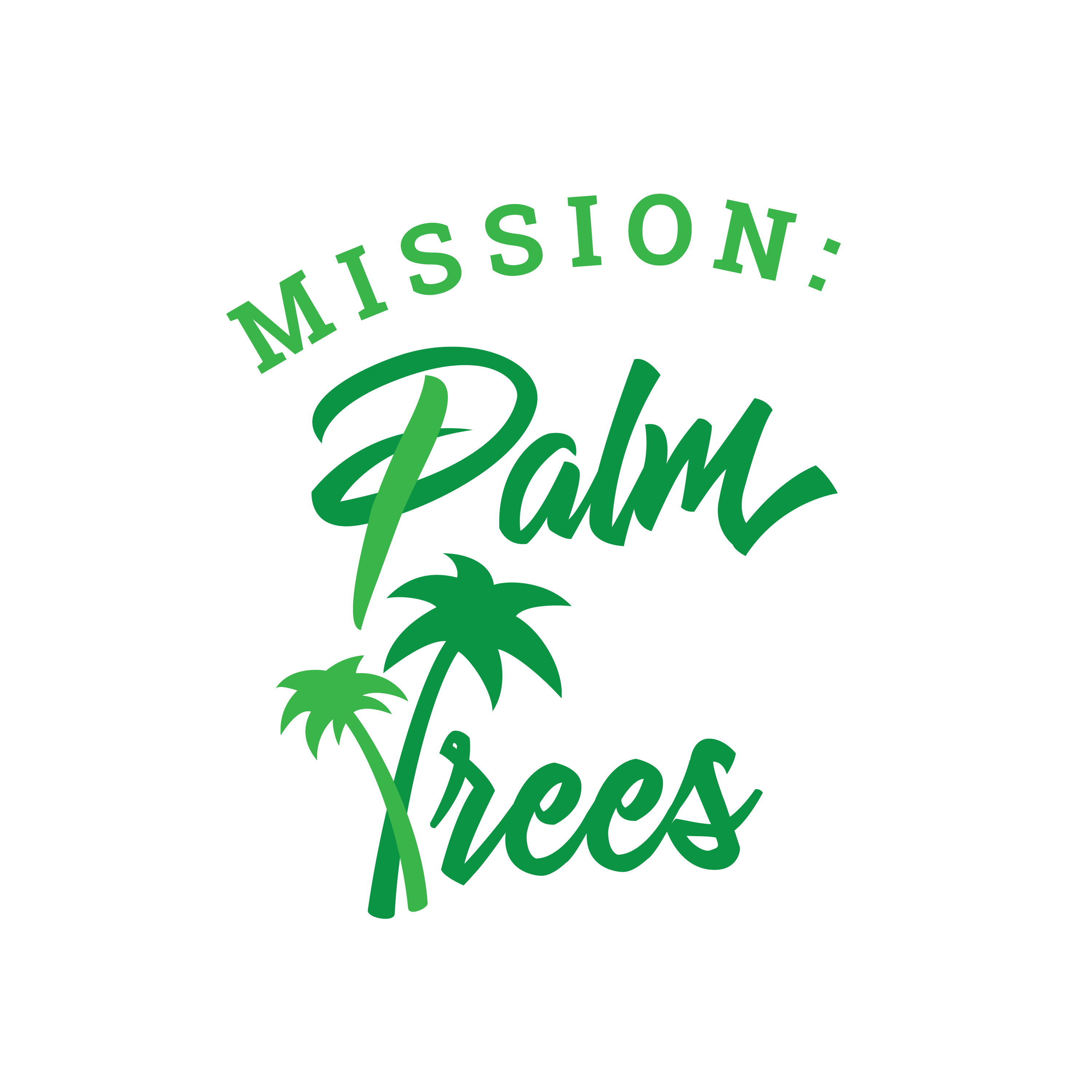- Home
- Fruit of Palms
- California Fan Palm Fruit
California Fan Palm Fruit
Ever wondered about California fan palm fruit?
Maybe you've seen it on the fruit stems (infructescences), high up near fan-shaped leaves. That's a reason it can come to mind.
This fruit, from the palm with the scientific name: Washingtonia filifera, could be considered an exotic fruit! The only palm native to the deserts of southern California & western Arizona. Other common names are Desert Fan Palm & Petticoat Palm. Also called the American Cotton Palm.
A "cousin" to the large Mexican Fan Palm, with the botanical name of Washingtonia robusta. Those very tall Palm Trees are Well-Known in Los Angeles.
Let's investigate what we should know about this California Fan Palm Tree & its Fruit Production. Like can we snack on them, or use this palm tree fruit in cooking recipes?
At Mission: Palm Trees
Palm lovers can soothe their palm-related searches and concerns. Our articles are intended to inform, while having fun, easily Finding What You Want or Need. Without unneeded shoptalk & tiring endless research. We Research For You!
Have You Noticed the California Fan Palm Fruit?
First off, what does this fruit look like?
Of course the flowers are needed to begin producing fruit. Numerous branching flower clusters grow out amidst the crown starting in early spring. Producing variable white to off-white or cream-colored flowers. Once flowers are pollinated, fruits begin developing in early summer.
The red-black fruit is classified as a drupe. Meaning they contain a single seed surrounded by fleshy pulp (think of a peach or plum) & don't split open when ripe. The California Fan Palm Tree has hard seeds, taking up about half the inner contents.
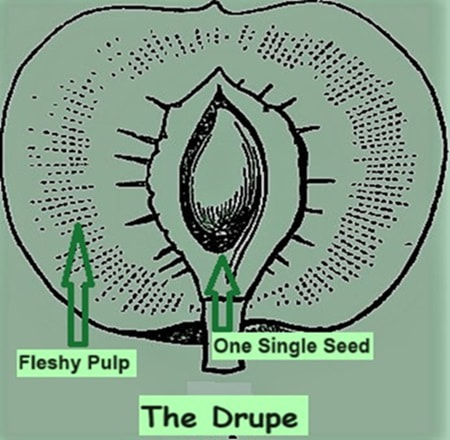
California Fan Palm trees produce round or oblong small fruits.
Typically measuring close to 1/2 inch (1.3cm). They show themselves in multiply branched clusters, kind-of like grapes do.
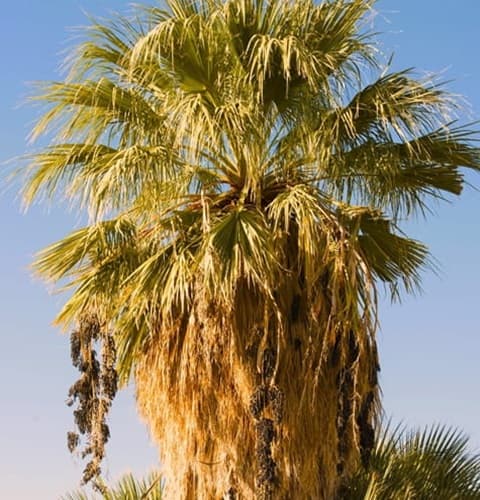 California Fan Palm Fruit in Joshua National Park
California Fan Palm Fruit in Joshua National ParkThe infructescence sagging below the leaf crown.
By the end of September the red-black fruit color means they're ripe. Then these fan palm fruits drop to the ground between November & January.
If you catch sight of any part of this fruit production process, you may find it intriguing.
Is the California Fan Palm Fruit Edible?
Yes, it definitely can be eaten. Would you chance to try it? We haven't yet, but plan to do so sometime soon.
Because a friend of ours has this large fan palm in her front yard. We featured its harrowing story in our newsletter memo (only available to those On Our Memo List). When we give the California Fan Palm Tree fruit a taste, we'll give our take on it!
What Do Washingtonia filifera palm fruits Taste Like?
People say the California fan palm fruit gives you a unique taste experience. After eating, you'd throw away the palm seeds, if you don't plan on Growing It into a Palm!
The edible pulp isn't thick like a nectarine. It's fairly thin. This palm tree fruit is known to be pretty sweet, reminiscent of caramel.
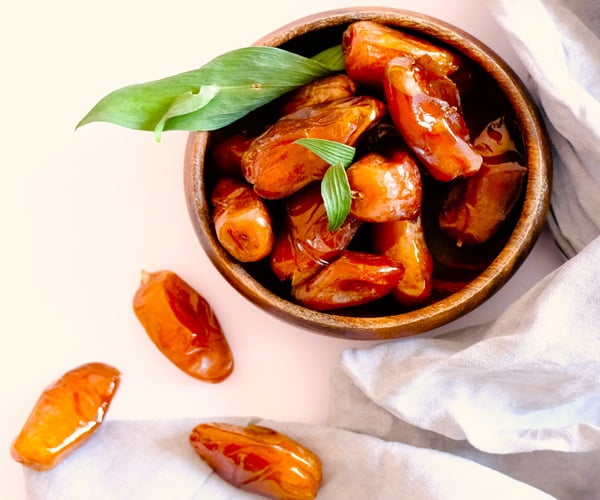 Tastes similar to these fruits of the Edible Date Palm (Phoenix dactylifera).
Tastes similar to these fruits of the Edible Date Palm (Phoenix dactylifera).Native Americans Valued This Fan Palm Tree Fruit
Native Americans of the Southwestern United States traditionally congregated by and/or created their villages near fan palm oases.
For the life-giving advantages in arid regions. Like the water source for growing food. Plus the protection of some shade. These oases in western southern states are still valuable. Even for archeological cultural significance that's still being discovered in such areas.
A gorgeous one is Near Palm Springs, California. Palm Canyon is supervised by the Agua Caliente Band of the Cahuilla Nation. It's been their traditional lands since time immemorial.
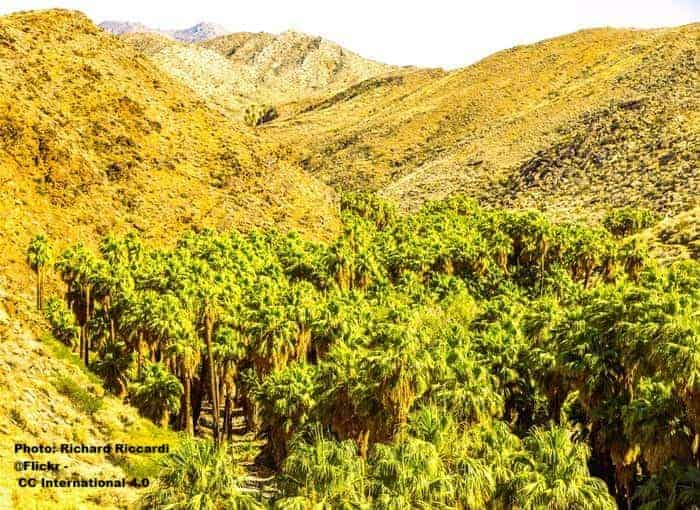 Palm Canyon, Southern California, With its Stunning Grove of Washingtonia filifera
Palm Canyon, Southern California, With its Stunning Grove of Washingtonia filifera Photo: Richard Ricciardi @Flickr - Attribution 4.0 International
NATIONS USING THE FRUIT OF THESE CALIFORNIA PALMS
California's Kamia (Kamiyai) Nations of the Imperial Valley & Cahuilla Indians, plus the Cocopa Nation in Arizona historically noted this Washingtonia filifera palm with it's fruits. Trying it, they found it palatable. Devising ways to use it for food.
It's fine as is, small fruits eaten as a snack or part of a meal. But Native Peoples also crushed the pulp for juice. They dried them for preserving. Or after drying, they crushed & ground it into flour-like meal. Leaving it in a more coarse texture, they fed this to livestock.
The Cahuilla People were known to grind the fruit's seeds into a semi-solid mash. Similar to oatmeal.
Animals Eating California Fan Palm Fruit
Some southwestern animals also favor the fruit of the California Fan Palm.
BIRDS LIKE THEIR FRUIT
Many southwestern species of birds eat the fruit.
Most only pick at the fleshy part for eating, leaving the seed alone. But some bird species consume the small fruit & seed together.
- In particular Cedar Waxwings, Western Bluebirds & Mountain Bluebirds do this.
- After digesting the pulp of these fan palm fruits, seeds are spread through their droppings.
IT'S A COYOTE FAVORITE
By autumn the California Fan Palm Tree Fruit has ripened. Then falling to the ground. Coyotes make it their prime food source at that time of year.
OTHER ANIMALS SCAVENGE FOR THE FRUIT
- The southwestern Gray Fox also finds it on the ground. They'll definitely have a bite!
- Rodents are known to nest amidst dead fronds covering the massive gray trunk. They're quite willing to climb up or down to access the fruit.
- Squirrels also happen upon it. They'll eat the fruit, and sometimes store the seed.
Is California Fan Palm Fruit Recipe Worthy?
Nutritional Facts for California Fan Palm Fruit
The nutritional value for the fruit is comparable to some other fruits.
But some say It's A Superfood!
About 1/2 cup (100g) has 348 calories. But that's along with eating the seeds, which you're unlikely to do, we think! 😏
When it comes to nutritional value, the California fan palm fruit is a little powerhouse for some essentials. For the fruit's small size, it's packed with dietary fiber, carotene, phosphorus & iron. It contains some vitamin C. It also has trace amounts of minerals such as calcium, thiamine, riboflavin & niacin.
Scientific analysis of its nutrients always includes the seed. That's something to figure out, since the pulp will definitely contain less total nutrition.
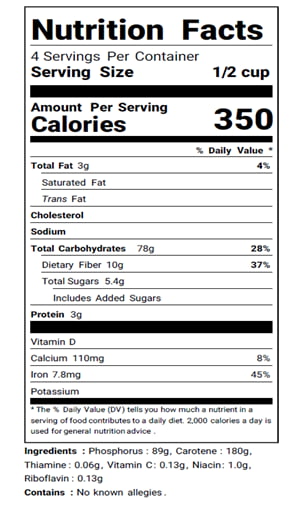
Recipe & Snack Ideas for California Fan Palm Fruit
Looking for a new ingredient to liven up your recipes?
Washingtonia filifera fruit may be a creative choice. After cleaning, serve it raw as a pretty nutritious snack. The high fiber content is good for your gut, while warding off hunger. Surely a healthier alternative to many commercially available treats.
Or use its pulp in recipes.
Its sweetish taste can make it a versatile ingredient to incorporate into yummy eats. Try it in a variety of baking treats, as an addition to fruit smoothies, or even adding small pieces into salads. Or use the fruits to make a sweet savory sauce.
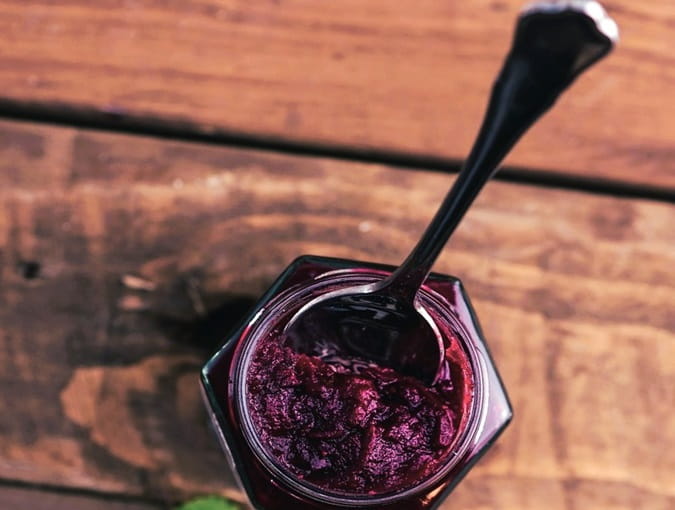 Use Washingtonia filifera fruit to make Your Own Homemade Jams or Jellies.
Use Washingtonia filifera fruit to make Your Own Homemade Jams or Jellies.Do you or a family member have food allergies? The California Fan Palm fruit is generally considered safe to eat. But if you've never tried it before, it's best to try a small amount first to ensure you don't have an adverse reaction.
Our Latest
-
San Diego palm trees: History, Species, and Their SoCal Charm
Fascinated by San Diego palm trees? Discover their history, types, and why they're a staple of SoCal’s SD neighborhood scenery to inspire your landscape design.
Want to Grow Washingtonia filifera Palm Fruit at Home?
The easiest way to get California Fan Palm fruit for use at home, would be to buy some. Just like you can pretty easily buy Edible Date Palm tree fruit. Problem is, we haven't seen anywhere to buy this fruit. You perhaps have friends/family in the southwestern United States who have access to Washingtonia filifera & its fruit. But if not, you might be able to grow this palm plant yourself.
Are you fascinated enough to think about growing this palm tree?
The California fan palm is a pretty hardy tree that can grow in more climates than its desert origins. Check Your USDA Zones. In arid areas or dry Mediterranean climates, it does well in Zone 7-11. But not good for those in more humid areas, then try 8-11.
Not fussy for soil type, as long as it's in well-drained sites. Plant where it gets full sun. Will you like its naturally retained old leaves? When established, once-a-month watering will suffice. It survives from its drought tolerance.
The California fan palm begins as slow-growing palm trees. Older trees, established, speed up. Full height gets to 60 feet, with evenly spaced palmate fronds throughout the crown.
 Sunlight filtering through the crown of palmate (fan-shaped) leaves.
Sunlight filtering through the crown of palmate (fan-shaped) leaves.Takeaways for California Fan Palm Fruit
The California fan palm fruit is pretty much hidden among edible palm fruits. Not many are aware it's fit for human consumption.
We've seen its history, how these palms have been important to native peoples in southwestern North America. We've evaluated its taste & discovered the nutritional benefits. Plus now know it can be eaten as a snack, while still having versatility for kitchen creations.
The palm itself can be grown in your garden, if you have the desert subtropical climates it needs. Many like it as a street tree.
Whether you're a nutrition enthusiast, a chef, a gardener, or someone who loves trying new things, investigating the California Fan Palm and its fruit may be for you!
